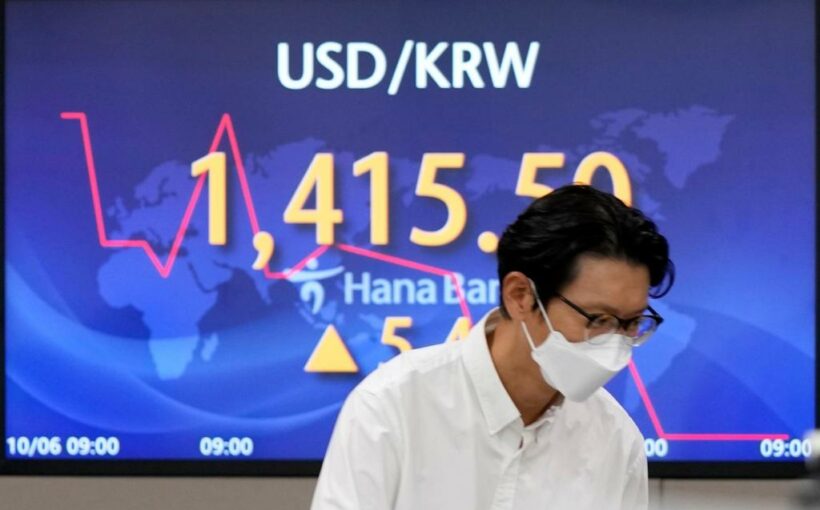By JOE McDONALD and MATT OTT
Wall Street futures pointed lower Thursday with ongoing concerns that a resilient job market will keep the Federal Reserve on track for another big rate hike early next month.
Futures for the Dow Jones Industrial Average and the S&P 500 each declined 0.4%.
Following two strong days of buying to start the last quarter of 2022, markets soured on Wednesday after a report by payroll processor ADP showed that employers added 208,000 jobs in September. Investors worry that could give ammunition to Fed officials who say more rate hikes are needed to cool inflation that is at a four-decade high.
“The economy is too strong for the Fed to pivot,” said Edward Moya of Oanda in a report.
Though government employment data released on Tuesday indicated that the job market may be cooling, investors will likely be more influenced by the weekly unemployment claims report coming later Thursday and the all-important September jobs report due out Friday.
Wall Street analysts expect the government to report that the U.S. economy added 250,000 jobs last month, well below the average of 487,000 a month over the past year, but still a strong number that suggests the labor market is healthy despite chronic inflation and two straight quarters of U.S. economic contraction.
At midday in Europe, London’s FTSE 100 slid 0.8%, the DAX in Frankfurt lost 0.4% and the CAC 40 in Paris declined 0.6%.
In Asia, Tokyo’s Nikkei 225 rose 0.7% to finish at 27,311.30 while the Hang Seng in Hong Kong lost 0.4% to 18,012.15.
The Kospi in Seoul surged 1% to 2,237.86 while Sydney’s S&P ASX 200 loss less than 0.1% to 6,817.50.
New Zealand declined while Southeast Asian markets gained.
On Wednesday, the S&P 500 lost 0.2%. The benchmark was coming off its strongest two-day rally in 2 1/2 years.
The Dow slipped 0.1% and the Nasdaq composite slid 0.2%.
Investors hope data that show the economy weakening will persuade the Fed and central banks in Europe and Asia to ease off rate hikes. They worry aggressive action to cool inflation might tip the global economy into recession, but forecasters say hopes central bankers will relent might be premature.
Fed officials say they are determined to keep raising interest rates and hold them at an elevated level until it is clear inflation has subsided.
In energy markets, benchmark U.S. crude lost 37 cents to $87.39 per barrel in electronic trading on the New York Mercantile Exchange.
It gained $1.24 on Wednesday to $87.76 per barrel after energy ministers from Saudi Arabia and other members of the Organization of Petroleum Exporting Countries agreed to production cuts to shore up sagging prices.
Oil surged to above $110 per barrel following Russia’s February attack on Ukraine but has fallen back. The decision to support prices might help Moscow maintain its income once Europe’s decision to cut purchases of Russian crude as punishment for the war on Ukraine takes effect in December.
White House press secretary Karine Jean-Pierre accused OPEC of “aligning with Russia.”
Brent crude, the price basis for international oil trading, lost 31 cents per barrel to $93.06 in London. It advanced $1.57 the previous session to $93.37.
The dollar strengthened to 144.74 yen from Wednesday’s 144.49 yen. The euro weakened to 98.63 cents from 98.94 cents.
—
McDonald reported from Beijing; Ott reported from Washington.
Source: Read Full Article
